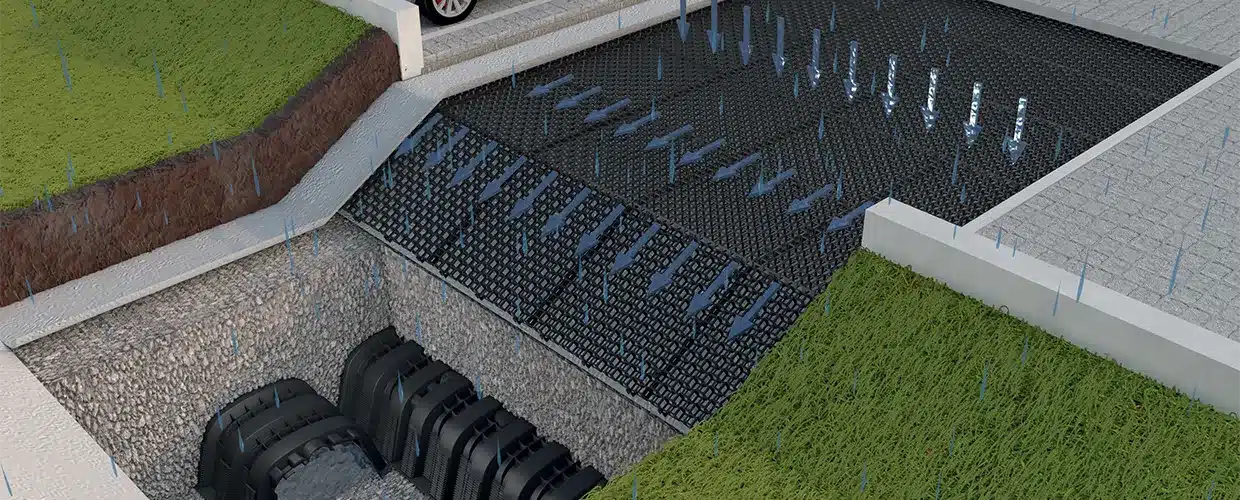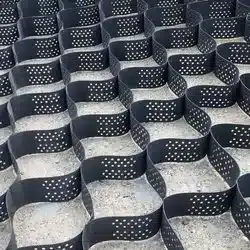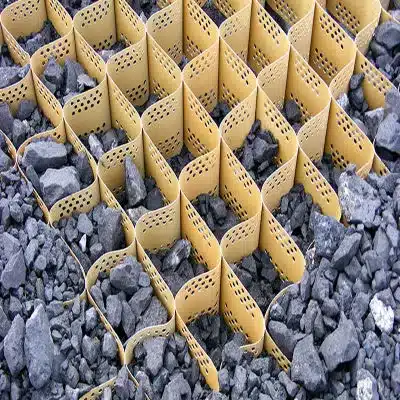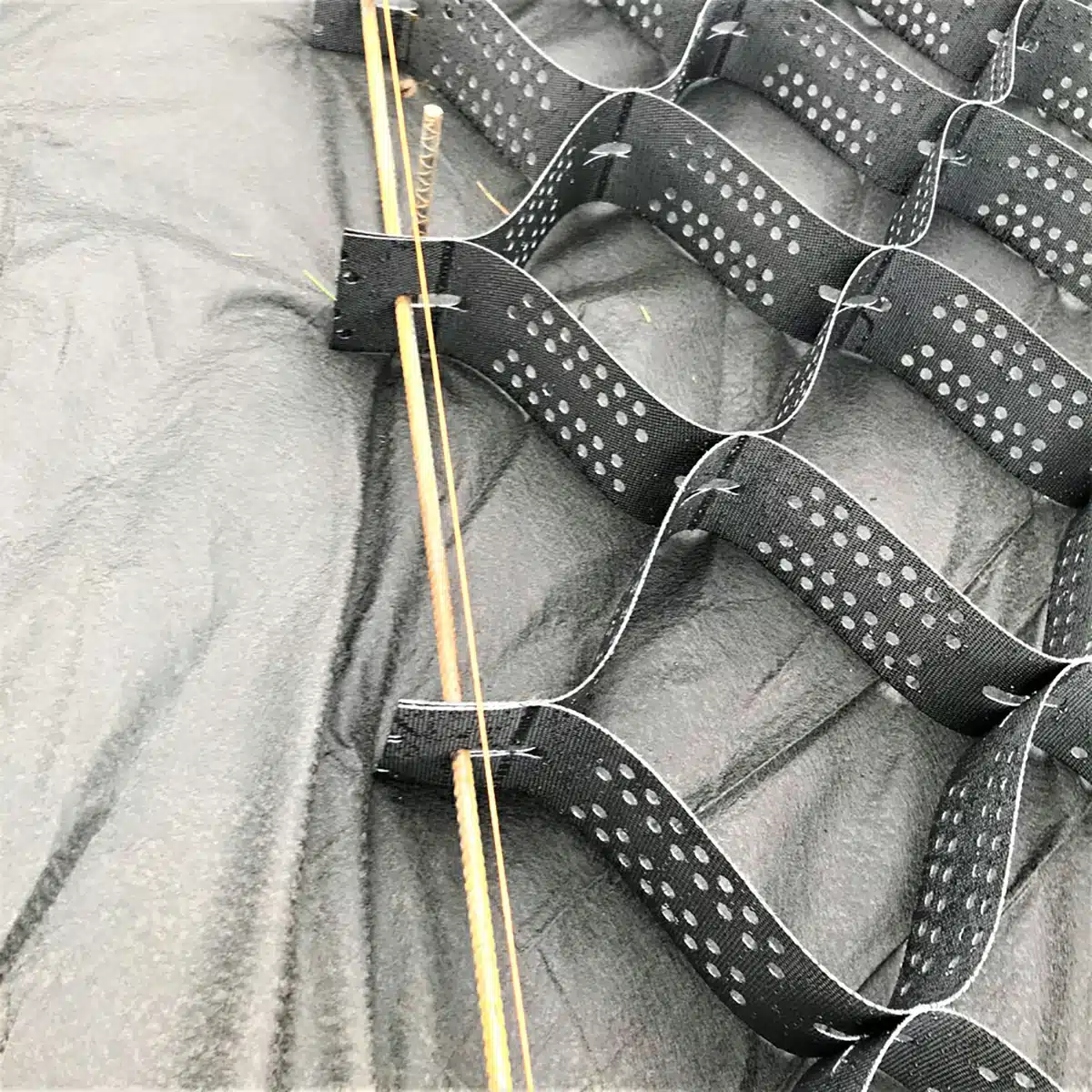+86-159 9860 6917
info@geofantex.com
geofantex@gmail.com
+86-400-8266163-44899
Geocell HDPE, a remarkable geosynthetic material, has gained significant popularity in the construction industry due to its versatility and exceptional performance. This article delves into the world of geocell HDPE, addressing what it is, its practical applications, and its benefits.

What is Geocell Material?
Geocell material is a 3D system made from high-density polyethylene (HDPE). It’s used to confine and stabilize soil, aggregate, or other fill materials, mainly in civil engineering and construction.
What is the Use of HDPE Geocell?
HDPE Geocell plays a crucial role in construction and civil engineering projects, helping to reduce the risk of structural failures by improving soil stabilization, load transfer, and erosion control. Here’s how it accomplishes this:
- Soil Stabilization: HDPE Geocells confine and stabilize soil, enhancing its load-bearing capacity and preventing erosion. This is vital for road construction, barriers, and retaining walls.
- Slope Protection: Geocell HDPE prevents slope erosion and landslides, creating a stable surface when filled with suitable materials for vegetation and erosion control.
- Load Support: The three-dimensional honeycomb structure of HDPE Geocell effectively distributes loads, making it ideal for load support in pavements, parking lots, and airport runways.
- Channel Protection: Geocells safeguard channels, riverbanks, and shorelines, preventing soil erosion and stabilizing the terrain.
- Green Roof Systems: In urban construction, HDPE Geocell is part of green roof systems, retaining moisture, supporting vegetation, and enhancing insulation, contributing to overall structural integrity.

How Does HDPE Geocell Improve Construction Efficiency?
- Reduced Material Usage: Geocells reduce the need for extensive soil or aggregate fill, making projects more cost-effective and environmentally friendly.
- Faster Construction: The ease of installation and quick deployment of geocells results in faster construction, reducing labor costs and project completion times.
- Long-Term Stability: Geocells improve the longevity and stability of construction projects, reducing the need for maintenance and repairs.
- Versatility: HDPE Geocell can be used in a variety of applications, simplifying project planning and reducing the need for multiple materials.
What Are the Environmental Benefits of Using HDPE Geocell?
The use of HDPE Geocell offers various environmental benefits:
- Erosion Control: Geocells prevent soil erosion, preserving natural landscapes and ecosystems.
- Sustainable Construction: By reducing the need for extensive excavations and fill materials, geocells contribute to sustainable construction practices and reduce the environmental impact of projects.
- Improved Vegetation: In applications such as green roof systems, geocells promote vegetation growth, which in turn benefits the environment by enhancing air quality and reducing heat island effects in urban areas.
In conclusion, Geocell HDPE is a versatile and eco-friendly geosynthetic material that has revolutionized construction practices. Its use not only improves construction efficiency but also supports environmentally sustainable projects. By understanding its potential and applications, engineers and construction professionals can harness the power of HDPE Geocell to create stronger, more resilient, and environmentally responsible structures.



Get Free Sample
We’ll respond as soon as possible(within 12 hours)






















